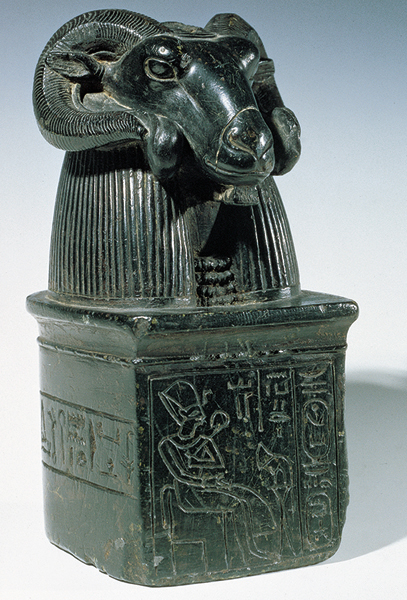Image Details

Photos by Erich Lessing
The Egyptian priest Pentaweret dedicated this statue of a ram’s head (shown here, compare with photo of abecedary) to the Temple of Amun at Karnak around 1150 B.C. The inscription on the statue’s pedestal is in Egyptian hieroglyphics—a script consisting of about 700 stylized pictures or signs, mostly word-signs and syllabic signs. Many scholars believe the first alphabet was created to record West Semitic—a language group that includes Hebrew, Phoenician and Ugaritic, among others—about the middle of the second millennium B.C. In this system, fewer than 30 characters are used to record speech, with each character representing a consonant. Appropriate vowels must be supplied by the reader. By 1400 B.C., the inhabitants of Ugarit, in modern Syria, were recording their own West Semitic language with about 27 wedge-shaped cuneiform signs.
